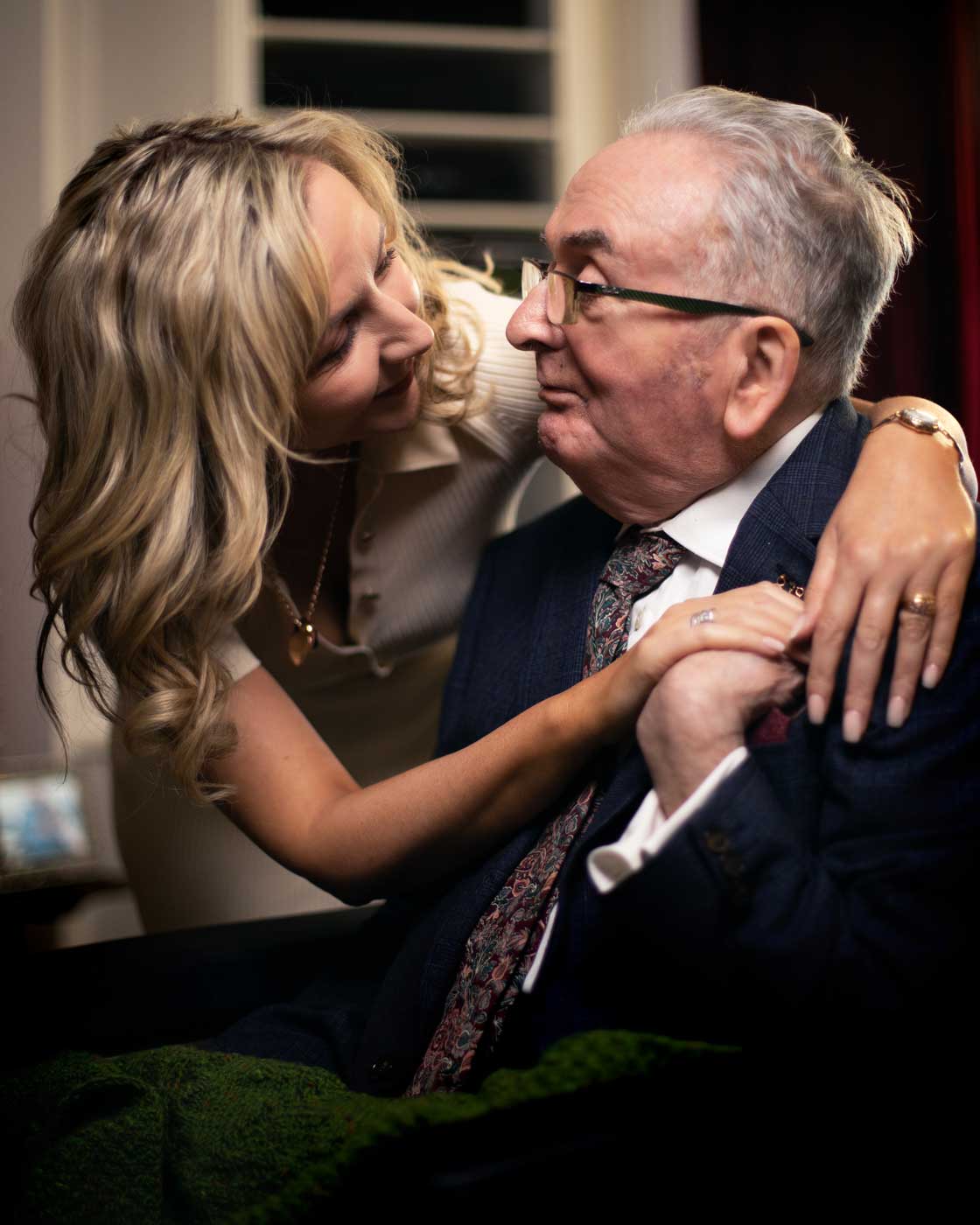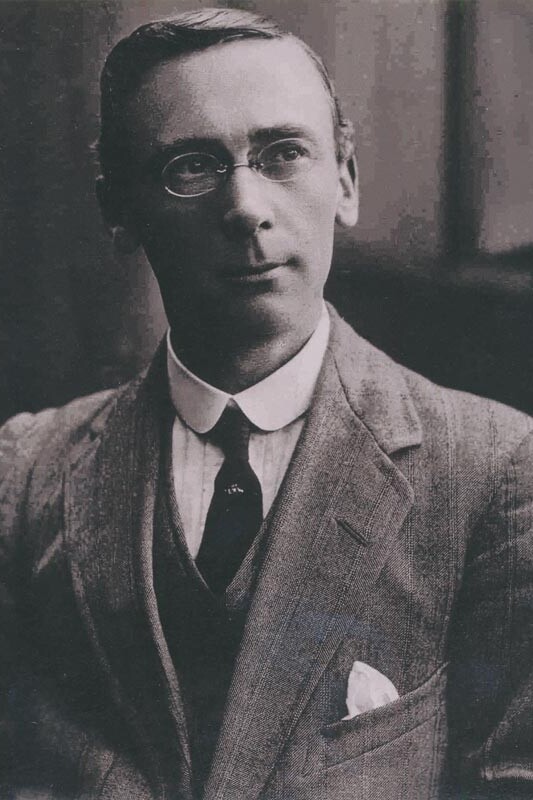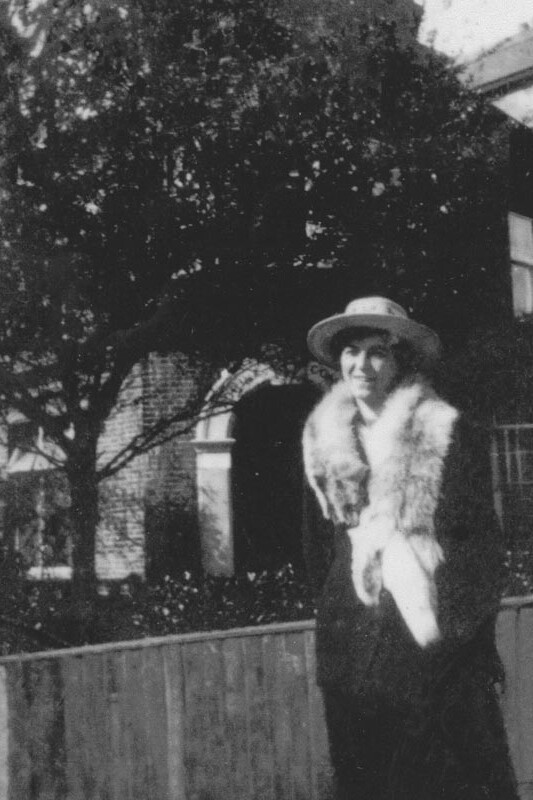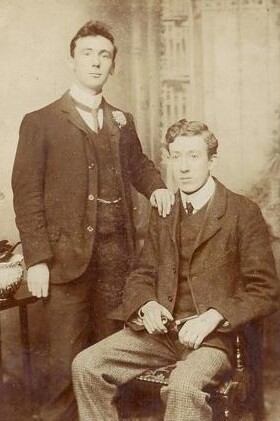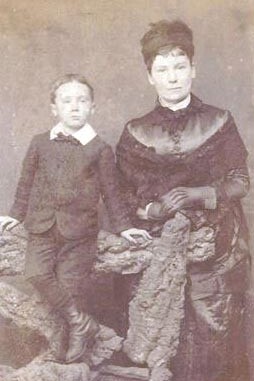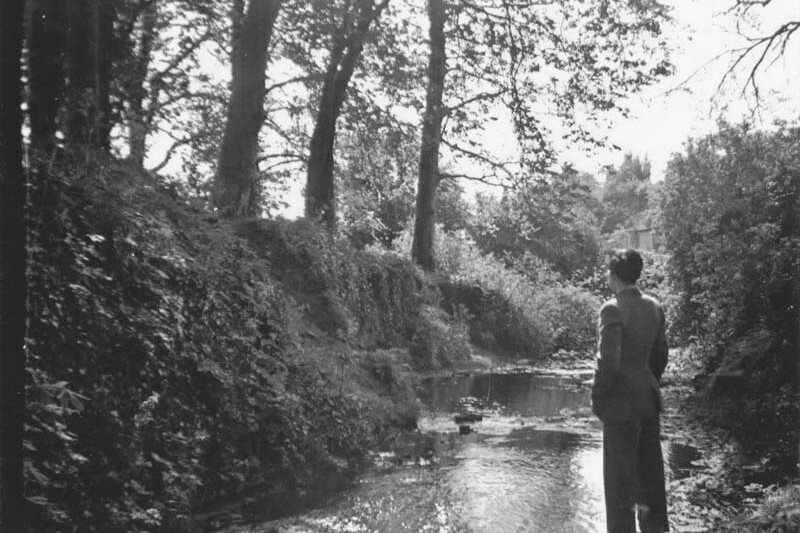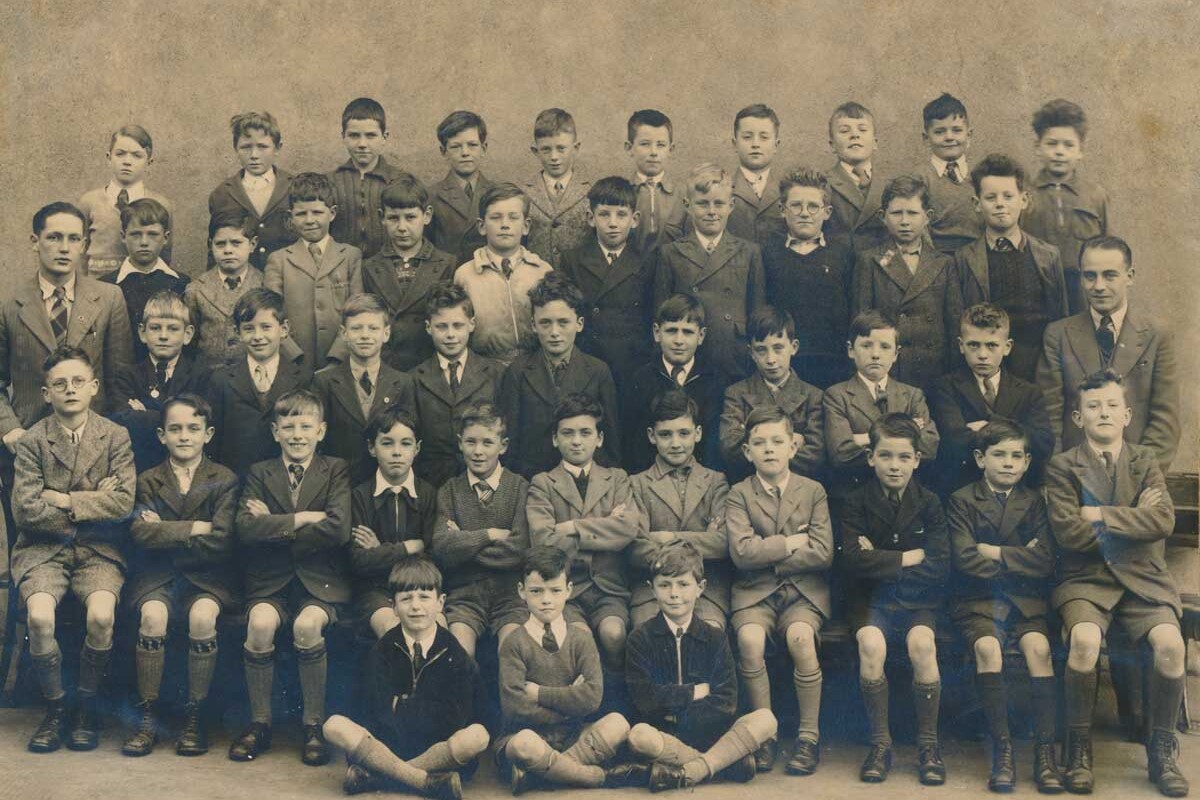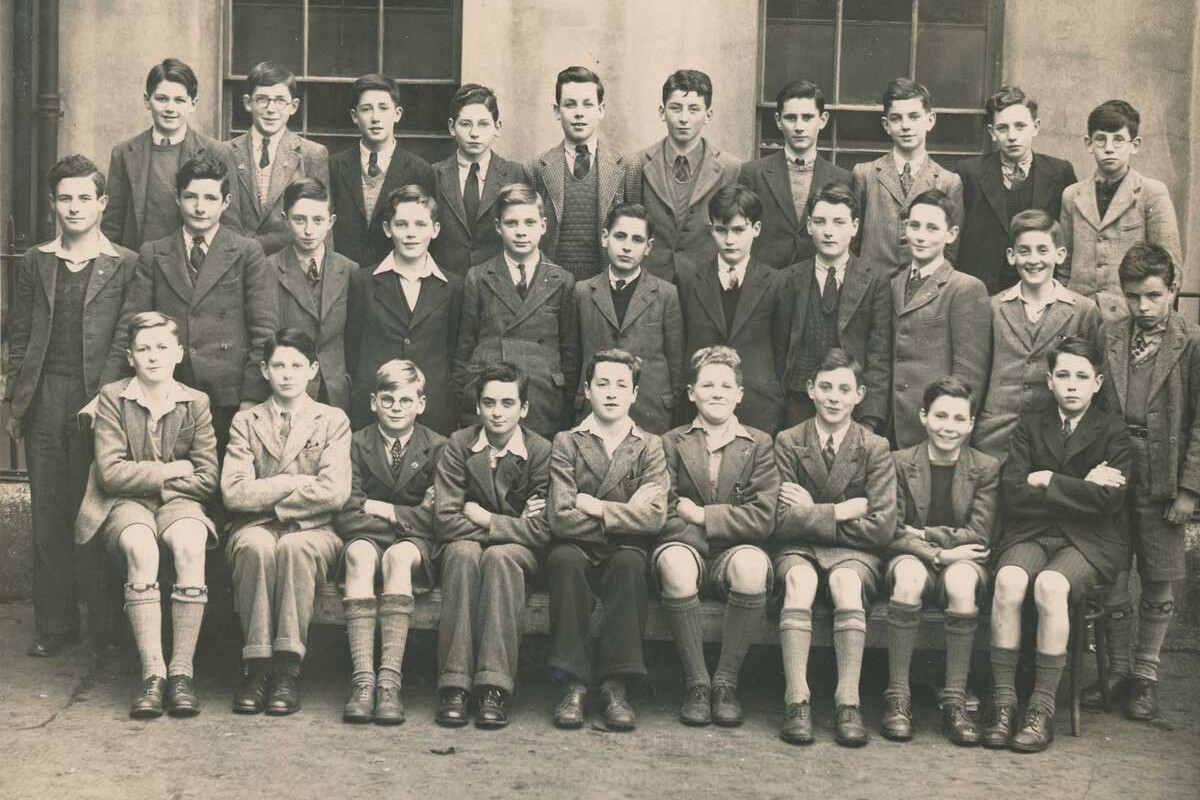Life and Legacy
Read about Bodley’s education, early compositions, his career as a lecturer, broadcaster, conductor, pianist, and honours received.
Early Life
Born on 4 April 1933, ‘between the two canals’ – which according to the composer made him a true Dubliner – Seóirse Pascal Lauri Bodley grew up in 90 Phibsborough Road, a quiet neighbourhood in Dublin 7, about 2 kilometres north of the old city centre. He was the youngest of two children born to Mary Bodley (née Gough, 1891–1977) and George James Bodley (1879–1956) and his childhood was a simple and peaceful one. Music was encouraged in his parents’ home: his father taught him to play the mandolin and his mother was his first piano teacher. From the age of seven, Bodley went to school at Coláiste Mhuire, an Irish-language all-boys Catholic school on the north-western corner of Parnell Square in central Dublin. Later in life he spoke about how growing up Catholic in 1950s Dublin informed his world view; in particular his fluency in – and great love of – the Irish language remained with him.
Education and Early Compositions
Bodley’s professional music education began in the Royal Irish Academy of Music, 36 Westland Row, where he studied piano with Dina Copeman. He wrote his first composition, a piano piece called Snowdrops at the age of 13. In his teens he took private composition lessons with the German conductor, Hans Waldemar-Rosen, who became his earliest musical mentor. During his ‘apprenticeship years’, he composed many orchestral and choral arrangements for professional performance mostly for the RÉ Singers and the Radio Éireann orchestra. His male-voice settings of Milton’s ‘Ring Out Ye Crystal Spheres’ and ‘Song on May Morning’ were first broadcast by the Radio Éireann Men’s Octet while he was in fifth year in school on 25 December 1950 and 26 May 1951. His most popular work for television, an early orchestral arrangement of ‘The Palantine’s Daughter’ (1956/57) – which became the signature tune of RTÉ drama series, The Riordains broadcast in the 1960s and 1970s – dates from this early period.
A performance of Bodley’s Music for Strings composed at the age of 19 and premiered on 10 December 1952 in the Metropolitan Hall by the Dublin Orchestral Players conducted by Brian Boydell (TCD) launched him nationally as a composer. This work was premiered when Bodley was a first year B Mus student at University College Dublin attending lectures at Newman House, St Stephen’s Green. Throughout his degree there were many landmark performances: four of his songs were performed at one of the annual gatherings of the Music Association of Ireland at Brian Boydell’s home in Angelsea Road. The following year a full recital of Bodley’s songs was performed by the composer with Tomás Ó Súilleabháin which was favourably reviewed in The Irish Times: ‘From his music it is clear that he has learnt from Hindemith and Bartók, but what he has learned has served merely to feed and cultivate his own musical thinking. There was a fluency, coherence and sense of purpose in most of the pieces which were offered which suggest that we now have a young musical talent which has something original to say’ (Irish Times, 27.11.1954, Cox, 11). Other works broadcast during his final year include an SATB setting to a text by Seán Ó Ríordáin performed by the Radio Eireann Singers and Sonáidín do Chúig Gaothúirlisí (Sonatina for Five Wind Instruments) recorded by the wind ensemble Les Amis de la Musique for Radio Eireann in 1955. After graduating with a First Class Honours B. Mus in 1955, Bodley moved to Stuttgart in 1957. Time apart from his native country, funded by a travelling fellowship from the National University of Ireland and the Arts Council Prize for young composers, enabled him to study at the Stuttgart Conservatory, where his composition teachers were the Austrian composer, Johann Nepomuk David (1895–1977), his conducting teachers Hans Müller-Kray (1908–1969), Conductor of the Süddeutscher Rundfunkorchester and Karl Maria Zwißler (1900–1984); he also studied piano with Alfred Kreutz.
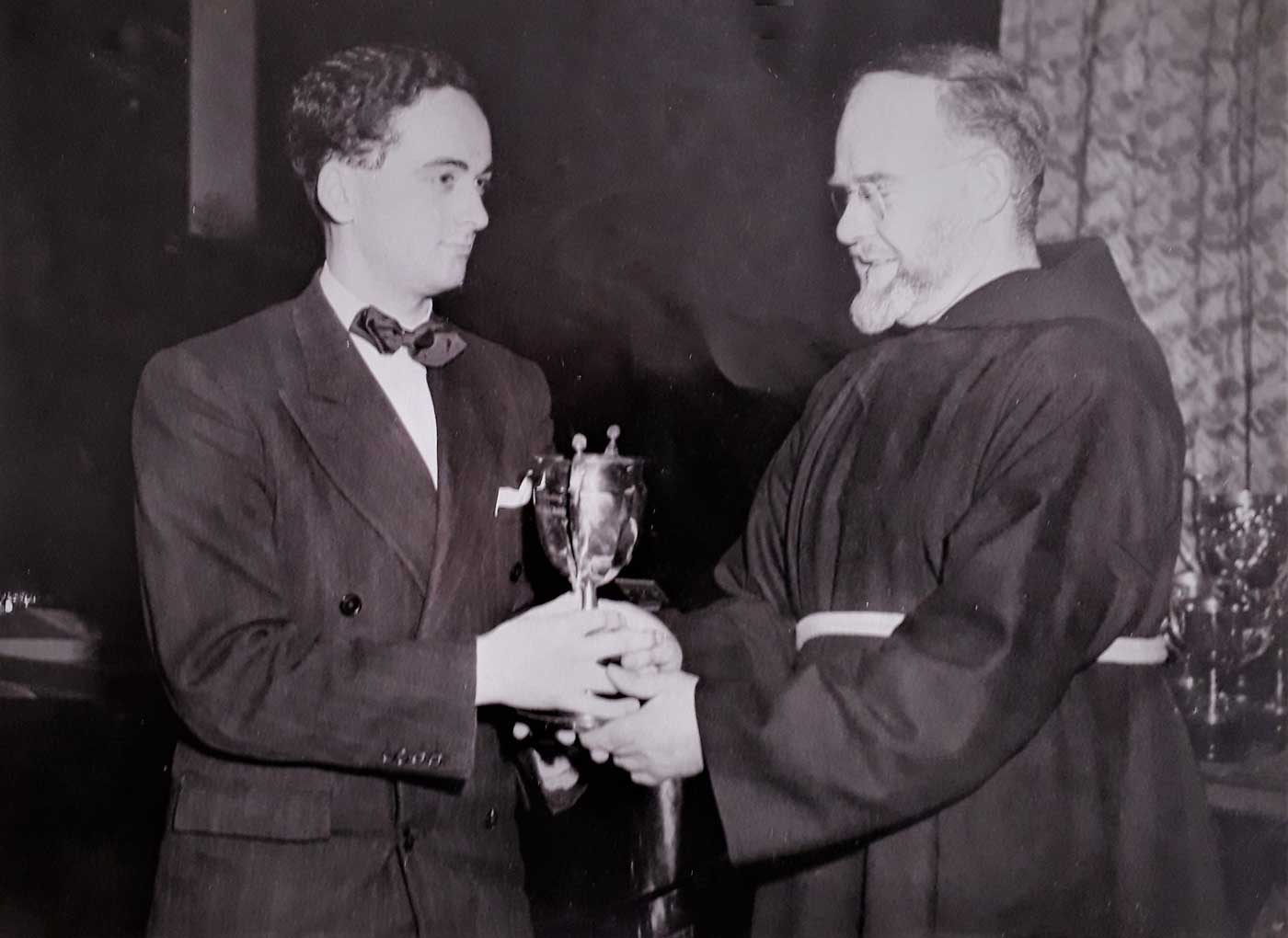
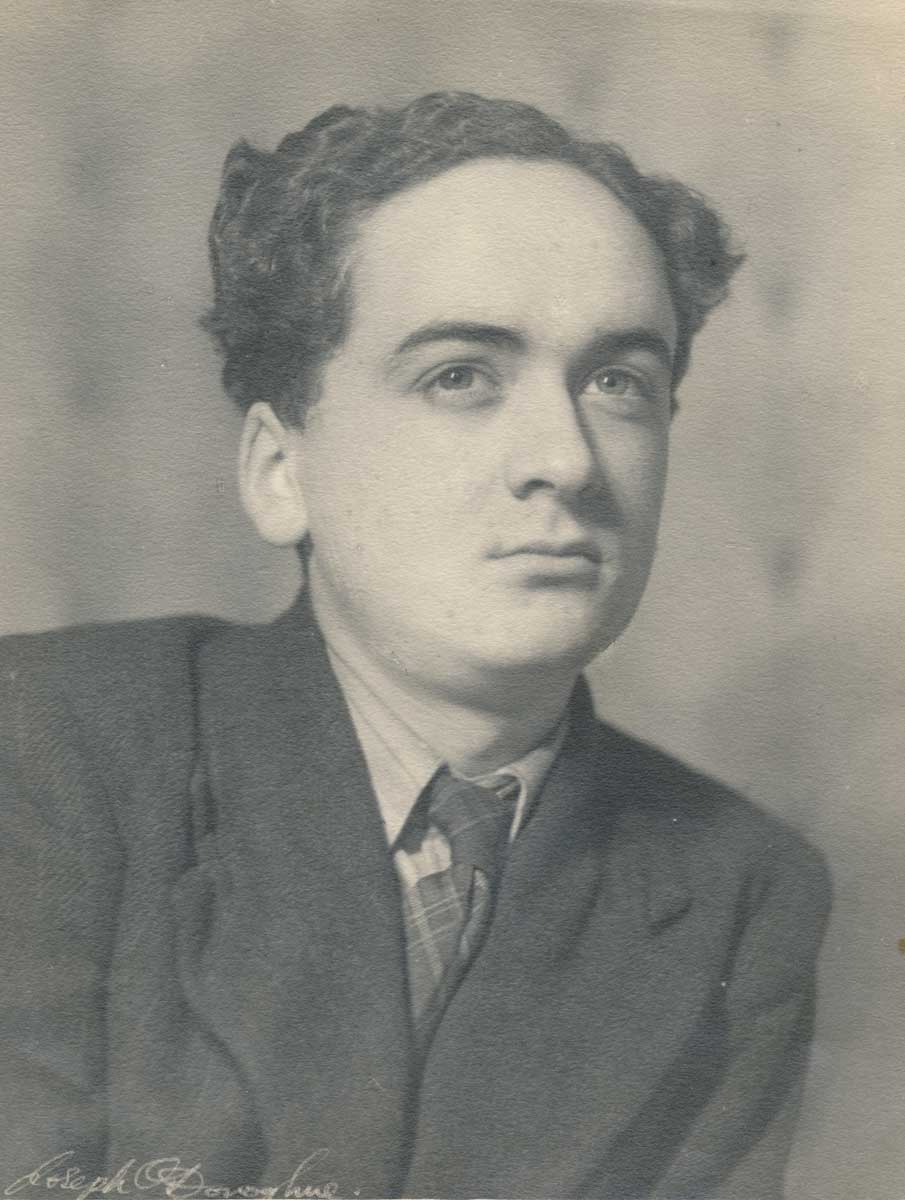
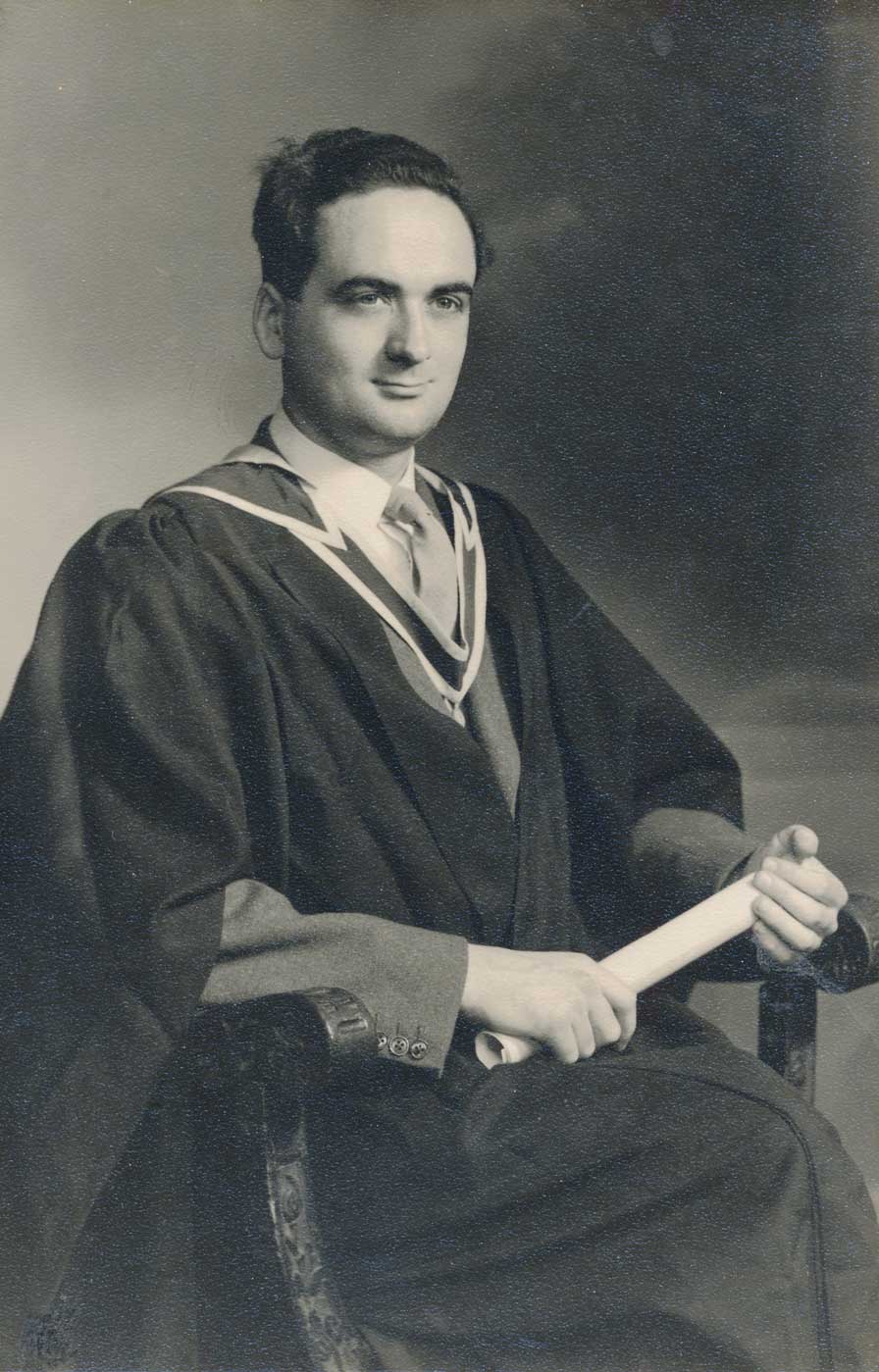
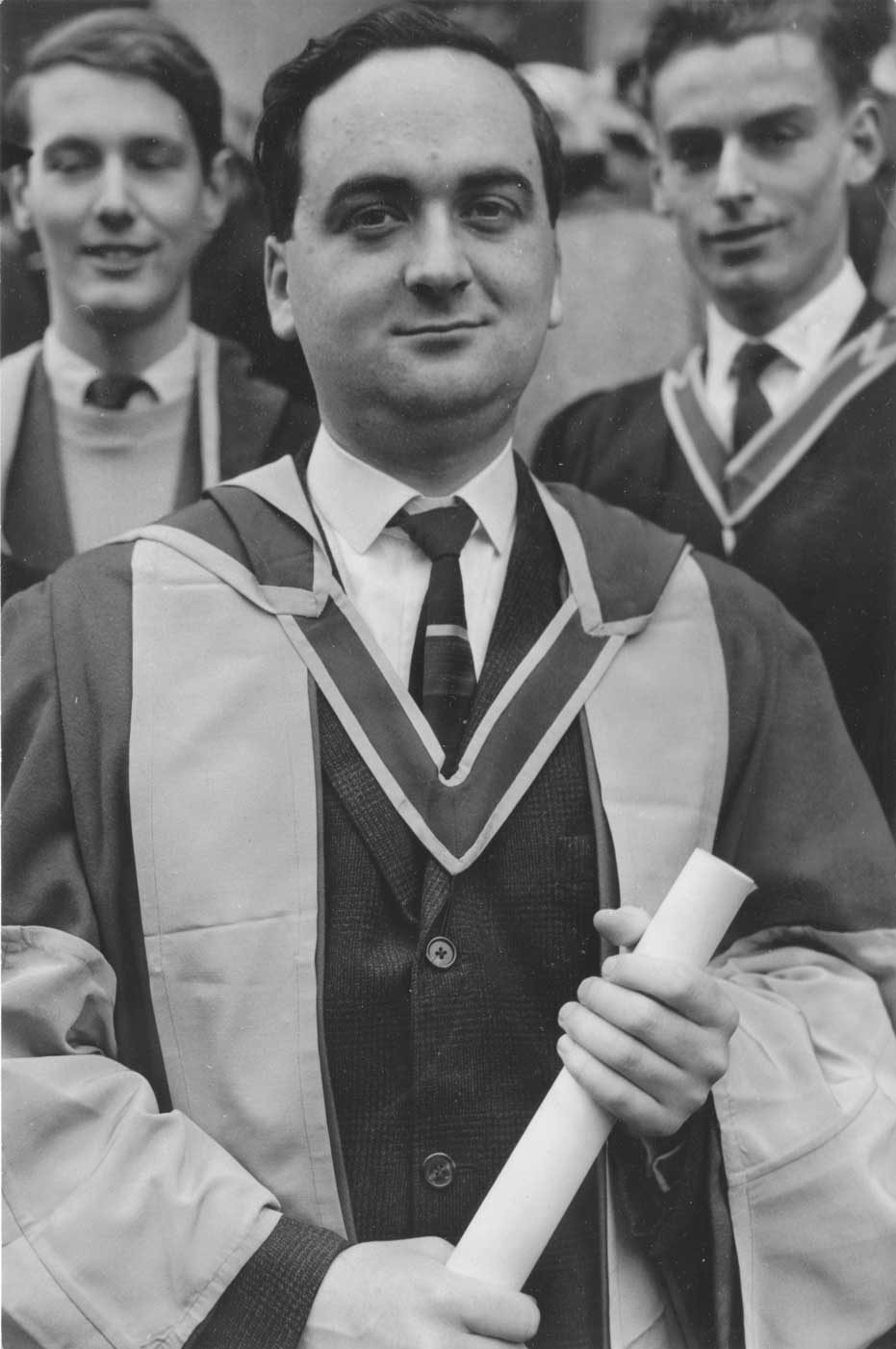
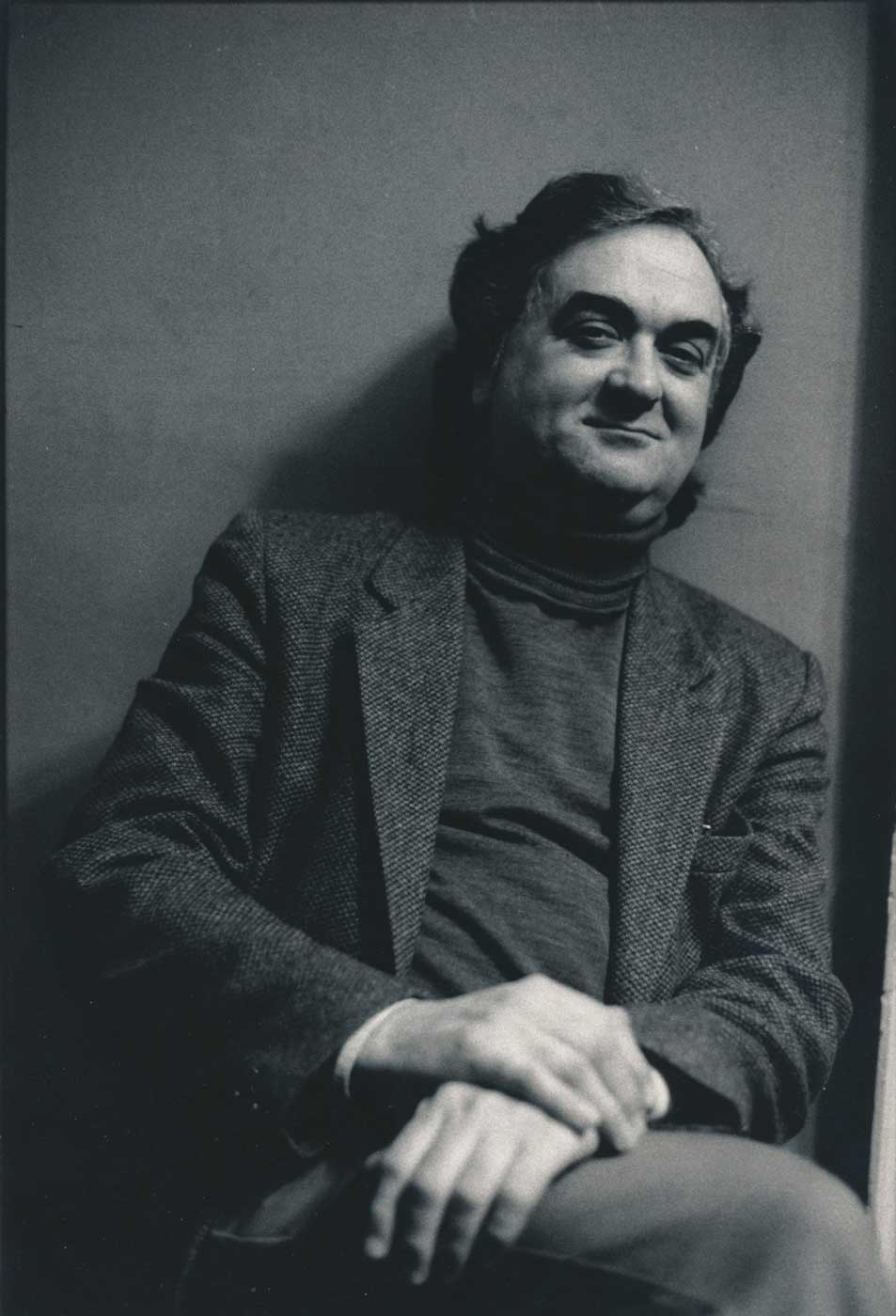
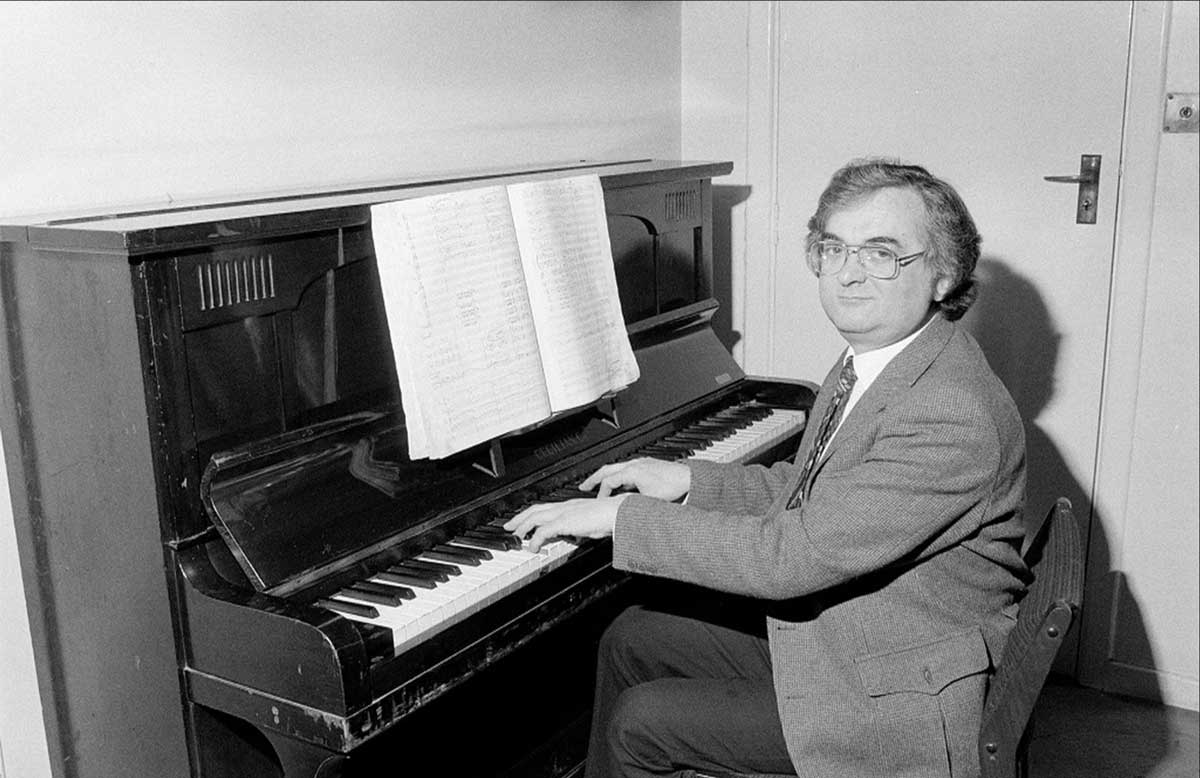
Teaching and Broadcasting
Bodley made a high-profile return to Dublin in 1959, when he was appointed Lecturer at University College Dublin. In 1960 he was awarded the degree of D Mus for which he submitted his First Symphony, completed under the tutelage of Johann Nepomuk David. The work was premiered at the Gaiety Theatre on 23 October 1960 by the Radio Éireann Orchestra, guest conducted by Hans Müller-Kray, who flew to Dublin to conduct his former student’s first symphony. The programme featured Brahms’ Second Piano Concerto, Beethoven’s Seventh Symphony and Bodley’s First Symphony. The significance of the occasion in Irish cultural life was recognized by Brian Boydell who wrote, ‘there are very few symphonies by Irish composers, and none of such proportions and seriousness of intent as this new work by Seóirse Bodley’. The success led to a permanent lecturing appointment in 1960.
Throughout his life Bodley was a teacher at University College Dublin for an outstanding 45 years. He is remembered by students and colleagues alike for his quiet commitment to the education of young musicians. ‘He was the first person to introduce courses on elctro-acoustic and computer music into the curriculum of an Irish music department’ (Cox, 39). His Sinfonietta, commissioned by the National Youth Orchestra of Ireland for the Millenium celebrations is dedicated to ‘the many who, no longer my students, have become my friends’. His influence on the next generation of composers has been recognised by many. Bernhard Harris recognised that ‘the philosophical and aesthetic influences of [Bodley’s] music have been far-reaching for other, younger, Irish composers and will no doubt remain so’ (Contemporary Irish Music: A Survey, 209), while Kevin O’Connell has expressed ‘a sense of wonder at a generation that worked so hard and accomplished so much. (‘Getting into Gear’, 108).
In addition to being a composer and university professor, Bodley was also a seasoned broadcaster. Early in his career he made documentaries and radio programmes for Radio Éireann. He was, for example. the youngest composer to contribute to the Radio Eireann ‘Composers at Work’ series in which he selected some of his music for performance and recorded a short statement, ‘A Composer’s Viewpoint’ on what it meant to be an Irish composer living in Germany. Later in his career, he composed incidental music for numerous films and TV documentaries most famously W.B. Yeats. Cast a Cold Eye (1988) and James Joyce: Is there one who understands me (1981) which received an Emmy award in New York in November 1982. A lesser-known documentary, but one close to Bodley’s heart is the documentary, Between the Canals (1983) which captures Dublin as he knew it in the 1950s with vignettes of the city’s literary lights: Patrick Kavanagh, Brendan Behan and Flann O’Brien. Bodley conducted the chamber ensembles for the various recording sessions.
Conducting and Performing
In the 1960s Bodley gave more attention to conducting where his keen ear and rhythmic incisiveness could produce a startling clarity. His obvious distinction was recognized in his appointment as Conductor of the Culwick Choral Society, a task he took up in 1961 and fulfilled to great acclaim. The position gave him practice in conducting other people’s music with performers of variable ability with whom he explored unconventional repertoire. His 10 year appointment was crowned in 1970 by performances of Brahms Songs of Mary, Tallis Lamentations of Jeremiah, Stravinsky’s Cantata on Anonymous 15–16th Century English Lyrics, Carl Orff’s Catulli Carmina, Couperin’s Messe pour le Couvents and Scarlatti’s St Cecilia Mass, all of which testify to the quality of his direction.
Among singers with whom Bodley has worked, he is known for his generosity of spirit and unstinting support, championing them in public and encouraging them quietly in rehearsals. An early recipient of this support was the Irish tenor, Tomas O’Suilleabháin, for whom he wrote his Irish language art songs. In his early period he enjoyed working with Veronica Dunne, who premiered his uncontested masterpiece, an orchestral cycle of W.B. Yeats settings, Never to have lived is best, commissioned by RTÉ to mark the Yeats centenary, and performed by the RTÉ Symphony Orchestra conducted by Tibor Paul in the Francis Xavier Hall, Dublin on 11 June 1965.
In the 1980s and 1990s he gave numerous recitals with the American mezzo soprano, Aylish Kerrigan, in Ireland, Germany and Spain, many of which featured Bodley’s work. During their cultural visit to China in August 1987 funded by the Irish Department of Foreign Affairs, they performed Bodley’s A Girl and piano Aislingí at the Dong Feng Theatre in Changsha in south-central China and in the Beilei Theatre Guangzhou (Canton) to audiences of between 1,000-1,500 people. In addition to the numerous arrangements he composed for the mezzo soprano, he composed numerous song cycles and song sets including A Passionate Love (1985), By the Margins of the Deep (George Russell AE, 1995), Look to this Day (a translation of the ancient Sanskrit salutation to the dawn, 1997), and After Great Pain (settings by Emily Dickenson and Walt Whitman) to honour the memory of those who died in New York on 9/11.
In his middle years he performed and composed three cycles for the contralto Bernadette Greevy: A Girl (1978), The Naked Flame (1987) and Earlsfort Suite (2000), all of which he dedicated to the singer. Bodley was deeply affected by her death in 2008 and commemorated their collaboration in a single setting, Remember, to a text by Christina Rosetti commissioned by the National Concert Hall in 2011.
The millennium marked a series of birthday concerts beginning on his 70th birthday when he performed a recital of Schubert’s Goethe Settings with English tenor, Ian Partridge, in Trinity College Dublin on 4 April 2003. By his 75th year he had formed a new artistic partnership with Sylvia O’Brien. His 75th birthday was marked by their performance and the publication of Bodley’s O’Siadhail settings, A Hazardous Melody of being (2008) in the Hugh Lane Gallery. Further cycles premiered by Bodley and O’Brien include his Heaney cycle The Hiding Places of Love (2011) commissioned by the soprano, also Gretchen (2012) published in A Community of the Imagination. O’Brien also gave the second performance in honour of the composer’s 80th birthday. During their years of collaboration, Sylvia O’Brien explored numerous early works by the composer including Never to have lived is best! and Meditations on Lines from Patrick Kavanagh which she performed at the RTÉ Horizons lunchtime concert on 13 January 2009 which celebrated the composer’s work. The concert was followed by the launch of a CD of three of Seóirse’s orchestral works.
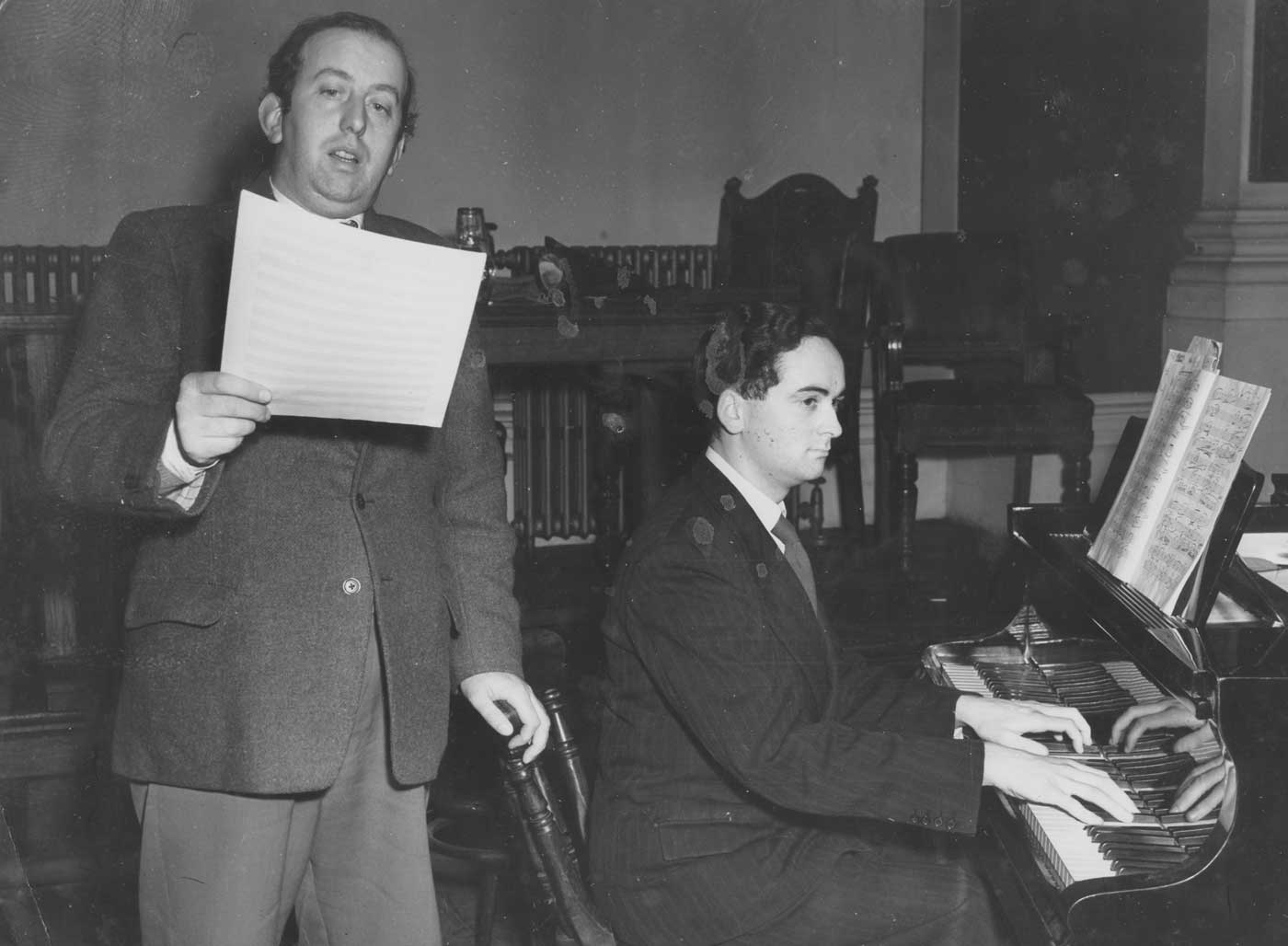
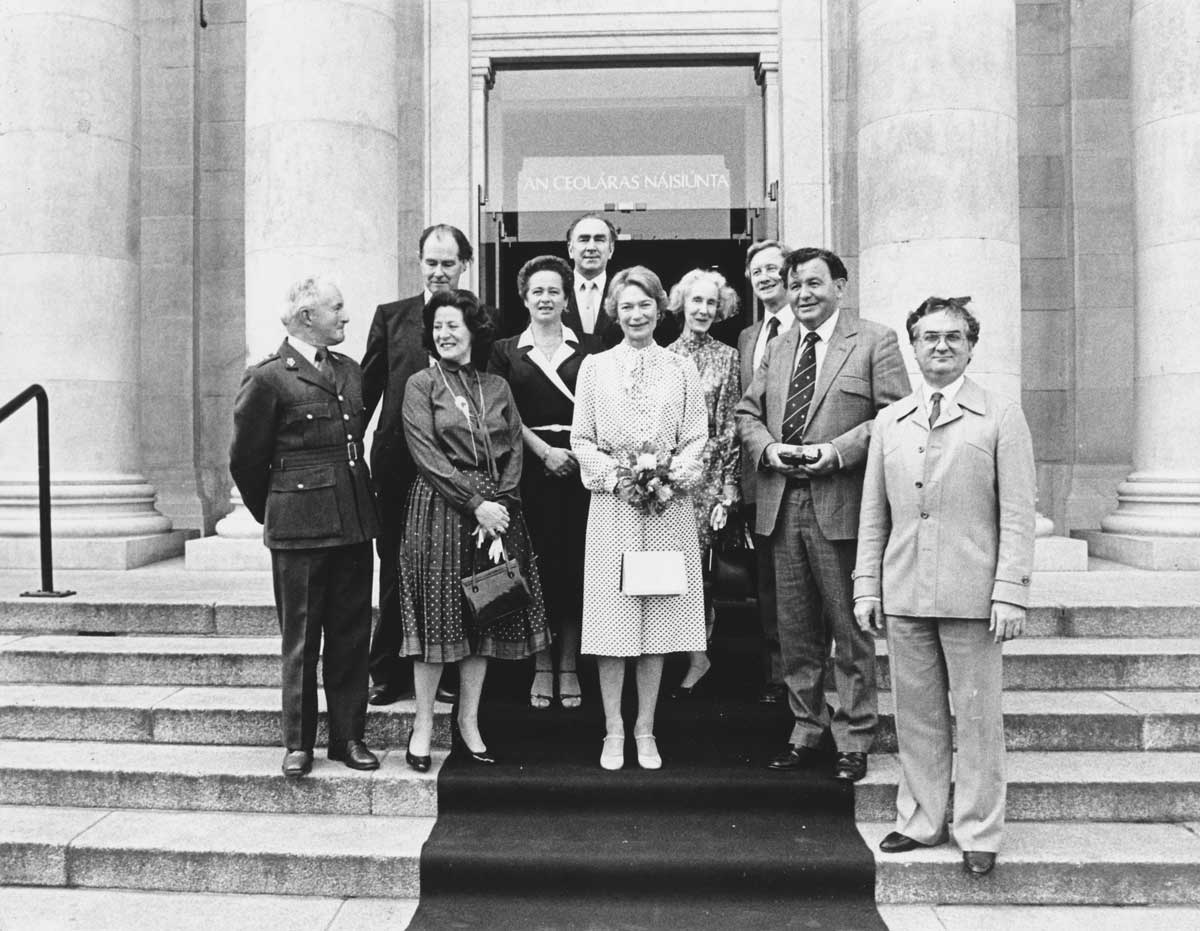
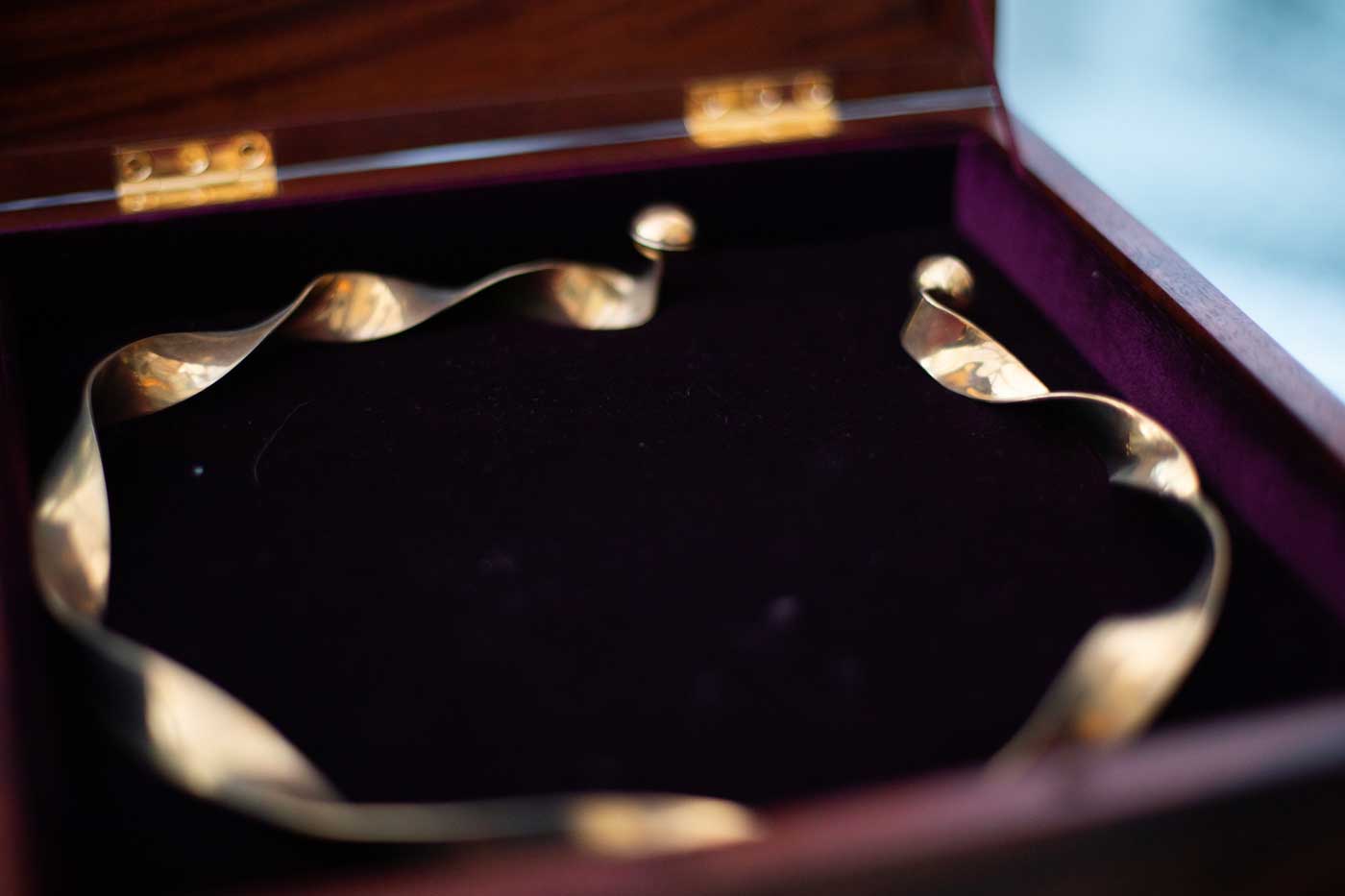
Honours
From the outset, Bodley’s work met with acclaim and won many awards. His first major choral work An Bhliain Lán (1956) was awarded the composition prize by An t-Oireachtas, a national festival of Gaelic culture. Other early prizes include a Travelling Studentship of the National University of Ireland, the Macaulay Fellowship in Music Composition and the Marten Toonder Award for a distinguished career in music. He is the first composer to be made a Saoi of Aosdana, Ireland’s state-sponsored academy of creative artists. When President Mary McAlese conferred the distinction in November 2008, she acknowledged that Bodley ‘has helped us to recast what it means to be an artist in Ireland’. He is one of seven artists honoured in the country: other recipients were Samuel Beckett, Seamus Heaney, Brian Friel and Louis Le Brocquy. On 19 October 2023 he was awarded an Honorary D Litt from the National University of Ireland in recognition of his outstanding artistic and civic contribution to music in Ireland. On receipt of this award President Michael D Higgins recognized ‘the profound mark he has left on our nation’s cultural landscape’.
Marriage and Family
In 1957 Bodley married Olive Murphy (1934–1999) with whom he had three children: Blánaid, Evelyn and Rónan. Later, he had three children with the Canadian doctor, Jennifer Laski: Dara, Ruairi and Deirdre. Their first son, who was born suffering from Patau’s syndrome, lived for one month, 15 October to 16 November 1989. Dara’s life was commemorated by the premiere of Bodley’s A Concert Mass, given by the RTE Chamber Choir and the Irish Chamber Orchestra conducted by the composer in the National Concert Hall on 4 May 1990. Many of Bodley’s friends gave their services including the singers Virginia Kerr, Aylish Kerrigan, Frank Dunne, Conor Biggs and the pianist Philip Martin. The text which Bodley wrote himself is a series of ‘reflections or meditations on the principal sections of the mass as it exists in modern liturgical form’. In later years Seóirse increasingly referred to this work in eight movements, for SATB soli, SATB choir and strings as ‘Dara’s Mass’.
Bodley spent the last two decades of his life with his second wife, the musicologist, Lorraine Byrne Bodley and her daughter, Bláthnaid in their home in Dublin city’s neighbourhood of Blackrock.
